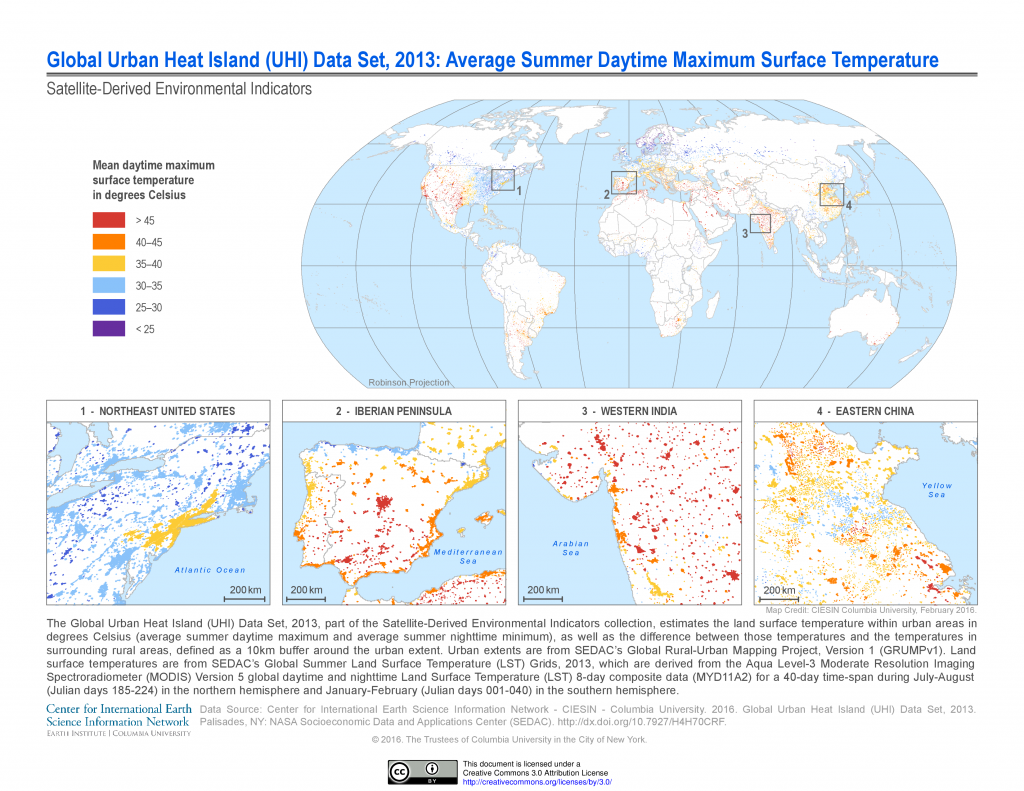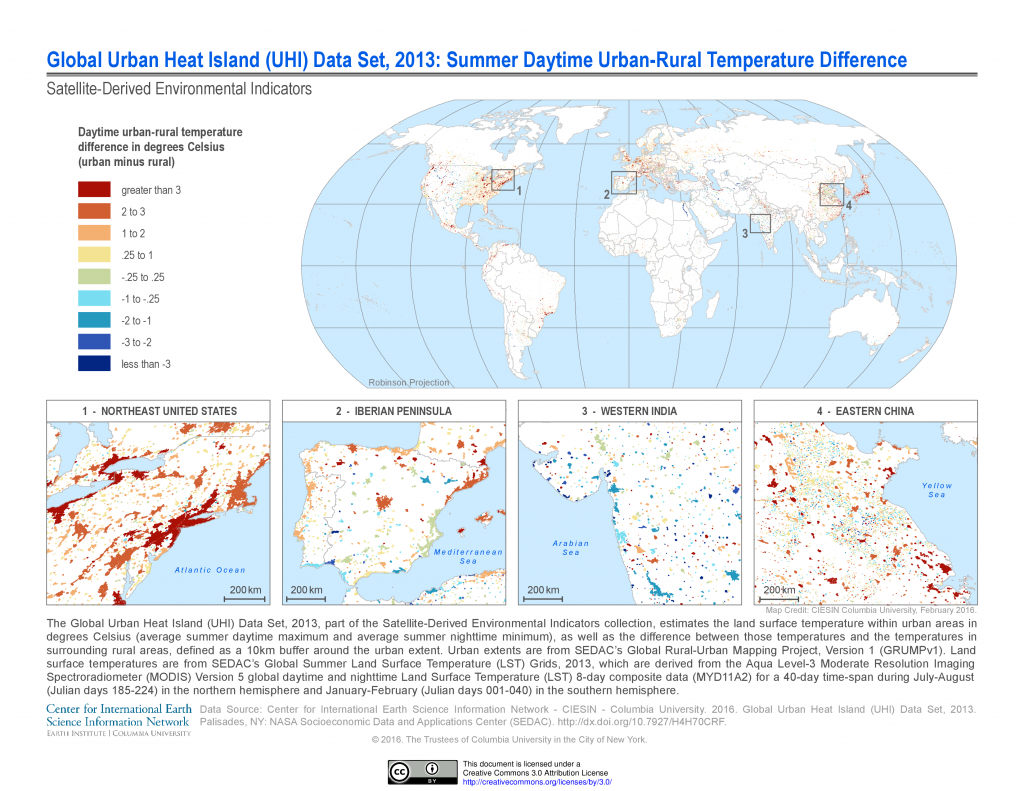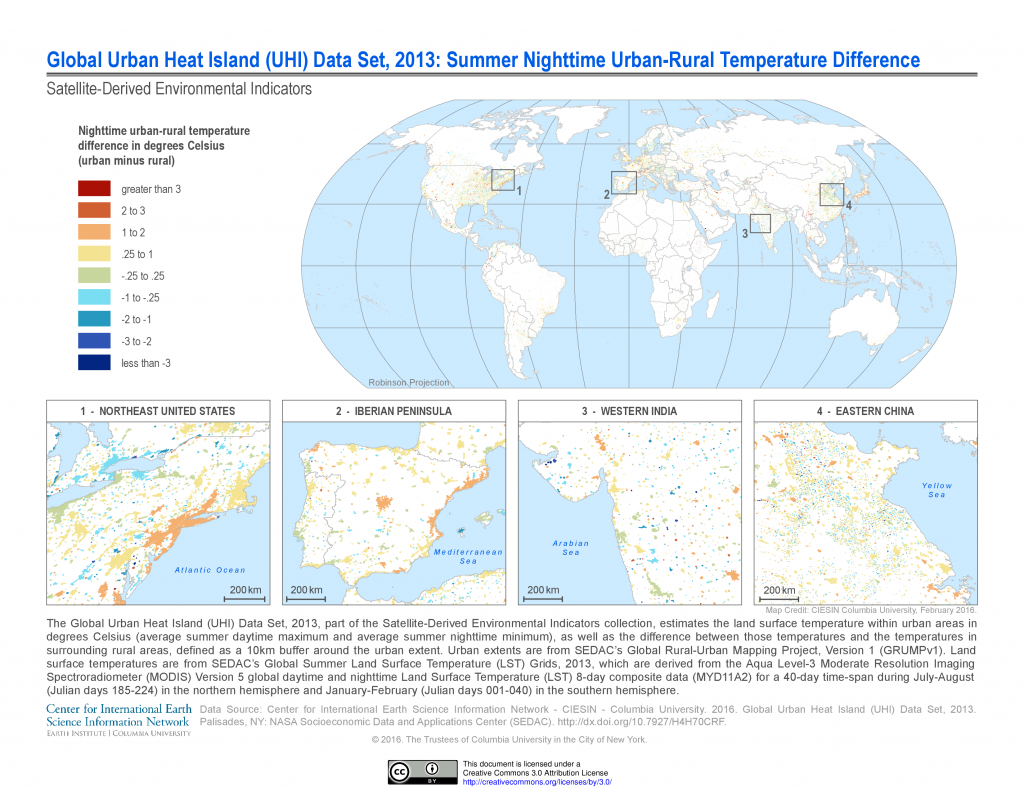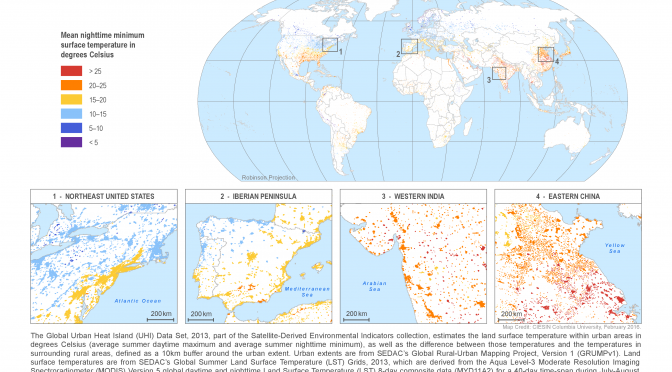Urban heat island
In contrast to the previously discussed mesoscale circulation systems, the urban heat island is related to a human-made land-cover change. Urban areas yield to enhanced sensible heat flux densities due to its increased surface area and change in albedo as compared to the former land cover, decreased latent heat flux densities due to sealing of the surface. The increase in temperature affects buoyancy, and hence cloud and precipitation formation. Various studies found that in the Westerlies, precipitation is increased in the downwind of large cities. In this unit, we will discuss the various impacts of urban areas on local weather.

Learning Goal
After completion of this unit students will be able to
- Define and explain the urban heat island effect
- Explain the preference for precipitation in the main downwind region of cities
- Explain thermal comfort differences in urban areas (graduate students)
- Explain the impact for urban areas on the near-surface wind field and synoptic systems
- Explain thermal comfort differences in urban areas (graduate students)
- Discuss UHI and its dynamic impacts as function of urban size (undergraduates) and latitude (graduate students)


Students’ tasks
- Watch this video on the urban heat island effect and megacities
- Read this section on urban dynamic effects in Mölders 2011, Land-use and Land-cover changes (graduate students)
- Download this data file and its documentation.
- Solve the tasks assigned at your class level in this unit 7 application task sheet.
Supplemental material
USEPA. “Heat Island Effect | U.S. EPA.” US Environmental Protection Agency.
Further readings on urban heat island effects
Sarrat, C., A. Lemonsu, V. Masson, D. Guedalia, 2006.
Oke 1978: Urban Meteorology
Mölders, N., 2011. Land-Use and Land-Cover Changes, Atmospheric and Oceanographic Sciences Library 44, DOI 10.1007/978-94-007-1527-1 3, Springer Science+Business Media B.V. 2012
Mölders, N., Olson, M.A., 2004. Impact of urban effects on precipitation in high-latitudes. J. Hydrometeorol., 5: 409-429.
Mölders, N., 1999. On the atmospheric response to urbanization and open-pit mining under various geostrophic wind conditions. Meteor. Atmos. Phys., 71: 205-228.
Acknowledgements
Data from NASA
© 2020 Nicole Mölders | All rights reserved
